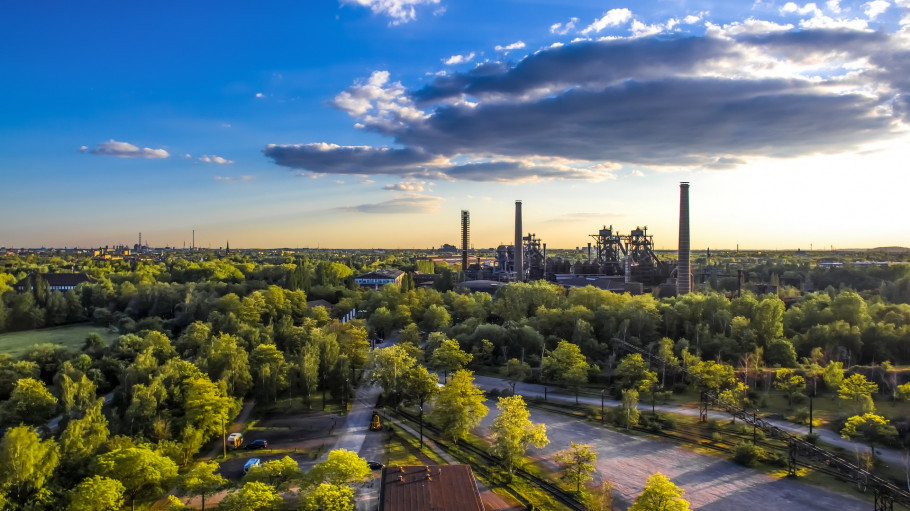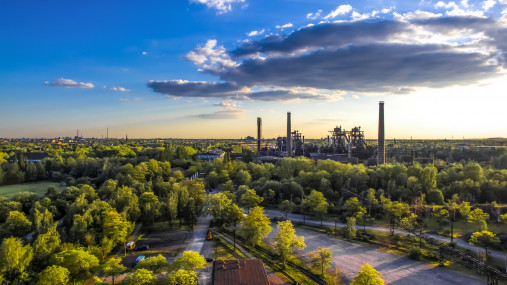
Publications » Position papers » EU proposals on Emissions Trading and Carbon Border Adjustment derail the green transition
EU proposals on Emissions Trading and Carbon Border Adjustment derail the green transition
Downloads and links
Recent updates

The European steel industry is a strategic sector for the EU’s green transition, economic resilience and independence. We have clear plans and concrete projects to reduce our sector’s CO2 emissions by at least 55 percent by 2030 and to achieve climate-neutral steel production in the European Union by 2050. These commitments represent a truly industrial revolution that requires a massive €30 billion capital investment in breakthrough technologies over the coming eight years and a significant increase in operational costs stemming from the use of decarbonized electricity and hydrogen.
However, European legislators are now considering proposals on the EU’s Emissions Trading System (ETS) and the Carbon Border Adjustment Mechanism (CBAM) that undermine our capacity to invest in these projects and derail the transition to green steel production in Europe.
The proposals weaken carbon leakage protection of our industry in the domestic and global markets, favouring international competitors which are not subject to equivalent carbon costs. In Europe, new allocation rules will suddenly reduce the main CO2 benchmark by around 40 percent – because of one plant that was previously not in the scope – and set a value which no company can achieve in just three years. This is due to a premature transition from the free allocation and indirect cost compensation system to a CBAM which has not yet been tested. Circumvention and resource shuffling are only a few of the many risks that could undermine the CBAM’s effectiveness. Moreover, the CBAM does not yet foresee any measure to preserve the EU’s 20 million tonnes of steel exports per year, worth €45 billion, and the 30,000 jobs that are directly dependent on these.
The proposals also remove massive allowances from the market, further driving the carbon and electricity price in Europe at a time when businesses and households are struggling with skyrocketing energy costs and inflation. Finally, they fail to capture the much higher carbon footprint of stainless steel imports derived from the embedded alloying elements.
We call on the European Parliament and Council to immediately address these concerns and in particular to:
The aforementioned changes to the ETS and CBAM will allow us to make the green steel transformation happen now within the EU. Our investments will greatly benefit climate protection, the EU’s industrial competitiveness, and hundreds of thousands of jobs across the EU
Geert Van Poelvoorde, CEO, ArcelorMittal Europe
Bernhard Osburg, CEO, thyssenkrupp Steel Europe AG
Henrik Adam, Chairman of the Board, Tata Steel Netherlands Holding
Francesc Rubiralta Rubio, Chairman and CEO, CELSA Group
Olavi Huhtala, CEO, SSAB Europe
Mario Caldonazzo, CEO, Arvedi
Hubert Zajicek, CEO, voestalpine Steel Division
Lorenzo Riva, CEO, Riva Stahl GmbH
Gunnar Groebler, CEO, Salzgitter AG
Timoteo Di Maulo, CEO, Aperam
Karl-Ulrich Köhler, Chairman of the Board, SHS-Stahl-Holding-Saar Gmbh &Co
Ajay Aggarwal, Executive President Europe, Liberty Steel Group
Heikki Malinen, President and CEO, Outokumpu Oyj
Jan Czudek, CEO, Třinecké železárny
José Enrique Freire Arteta, President, Megasa
James E. Bruno, President, US Steel Košice
Hans Jürgen Kerkhoff, President, Wirtschaftsvereinigung Stahl
Bernardo Velázquez Herreros, President, UNESID – Spanish Steel Association
Zlatislav Ivkov, General Manager, Stomana Industry S.A.
Markus Ritter, CEO, Marienhütte Stahl & Walzwerk GmbH
George Michos, CEO, Sidenor Group
Vasileios Goumas, CEO, Hellenic Halyvourgia
Markus Menges and Florian Glück, Managing Directors, Badische Stahlwerke GmbH
Roberto Re, CEO, Metinvest Europe
Radek Strouhal, CEO, Vítkovice Steel
Giuseppe Pasini, President, Feralpi Group
Claudio Riva, President, Riva Acciaio
Alessandro Banzato, CEO, Acciaierie Venete
Antonio Marcegaglia, President and CEO, Marcegaglia Steel
Giuseppe Lucchini, President, Lucchini Rs
Michele Della Briotta, President Europe, Tenaris
Klaus Enwald, CEO, Ovako Imatra Oy Ab
Alexander Becker, CEO, GMH Gruppe
José Jainaga, CEO, Sidenor Aceros Especiales
Carlos Alvarez, CEO, Aceros Inoxidables OLARRA, S.A.
Andrey Zubitskiy, President of the Management Board, SIJ Group
Francisco Irazusta, Executive Chairman, Tubos Reunidos SA
Christian Wiethüchter, CSO | COO, BENTELER Steel/Tube GmbH
Nicos Georgakellos, President, ENXE – Hellenic Steelmakers Union
Ionel Bors, President, UniRomSider – Romanian Steel Producers’ Union
Stefan Dzienniak, President of the board, HIPH – Polish Steel Association
Roman Stiftner, Managing Director, Austrian Mining and Steel Association
Ivan Jurkošek, General Manager, Štore Steel
Annika Roos, Managing Director, Jernkontoret
Kimmo Järvinen, Managing Director, Metallinjalostajat
Philippe Coigné, Director General, Groupement de la Sidérurgie
Bruno Jacquemin, Délégué Général, A3M
Daniel Urban, Chairman, Ocelářská unie
Anton Petrov, Chairman of the Board, Bulgarian Association of the Metallurgical Industry
Ianc Petru, Executive Manager, UNITUB – General Union of Romanian Tubes Producers
Michel Tellier, CEO, Reinosa Forgings & Castings
Timo Rautalahti, CEO, Boliden Harjavalta
François Michalet, Secretary General, ESTA - European Steel Tube Association
Alexis Van Maercke, Secretary General, APEAL
Klaus Peters, Secretary General, ESTEP – European Steel Technology Platform
Axel Eggert, Director General, The European Steel Association (EUROFER)

Download this publication or visit associated links
Strasbourg, 17 December 2025 – The European Commission’s latest proposals on the Carbon Border Adjustment Mechanism (CBAM), unveiled today, correctly identify several loopholes that risk undermining its effectiveness, notably regarding EU exports, downstream sectors and circumvention practices. However, despite these laudable efforts, the measures put forward fail to deliver a comprehensive and durable response to carbon and jobs leakage, warns the European Steel Association (EUROFER).
A milestone occasion to quickly and effectively restore affordable electricity, to relaunch the
decarbonization and strengthen the international competitiveness of the European steel
industry.
Brussels, 02 December 2025 – Unchanged negative conditions – U.S. tariffs and trade disruptions, economic and geopolitical tensions, protracted weak demand and still high energy prices – continue to weigh on the European steel market. EUROFER’s latest Economic and Steel Market Outlook confirms for 2025 another recession in both apparent steel consumption (-0.2%, unchanged) and steel-using sectors (-0.5%, revised from -0.7%). A potential recovery is expected only in 2026 for the Steel Weighted Industrial Production index (SWIP) (+1.8%, stable) and for apparent steel consumption (+3%, slightly revised from +3.1%) – although consumption volumes would still remain well below pre-pandemic levels. Steel imports retained historically high shares (27%), while exports plummeted (-9%) in the first eight months of 2025.